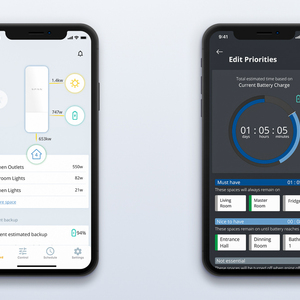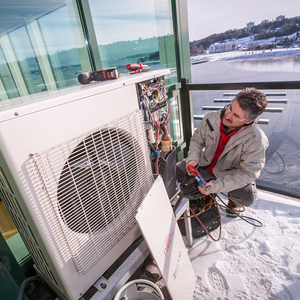
After the economics blogger Noah Smith invested in a company that made an induction range with a built-in battery, he explained a virtue of the technology: “The wiring in many U.S. homes and businesses simply isn’t robust enough to handle the kind of power demands that a fully electrified building would require—you have to tear out the wiring and install better wiring, and that is difficult and expensive. Anyone who has installed an induction stove knows this all too well.”
This appears to be the conventional wisdom—that a 100-amp electrical service isn’t big enough for an all-electric home, and if you want to replace your gas furnace, water heater, or stove, let alone charge your electric car, you are going to have to upgrade your service to 200 amps. The cost and the time for this can vary wildly.
The New Buildings Institute says: “The process usually costs $3,000 to $25,000 and takes 2 to 18 months.” They also note that “if millions of homes upgrade their panels over the next decade, and fill the circuits with appliances that use electricity, utilities could face serious challenges meeting increased demand without making costly upgrades to the grid.” Some electrical companies suggest people should upgrade because “older electrical panels can’t keep up with the power needs of modern homes is the advent of new technologies.”
Questioning conventional wisdom
New technologies are dramatically reducing electrical loads, with lighting going LED, while electric water heaters and clothes dryers get heatpumpified. But even without new technologies, most people aren’t getting close to hitting 100 amps. You could add up the loads of all your appliances, and they would likely total more than 100 amps, but we don’t run them all at the same time; the peak load is likely significantly less. A study for…
Weekly Newsletter
Get building science and energy efficiency advice, plus special offers, in your inbox.

This article is only available to GBA Prime Members
Sign up for a free trial and get instant access to this article as well as GBA’s complete library of premium articles and construction details.
Start Free TrialAlready a member? Log in















2 Comments
It's nice seeing more low power options. My miele heat pump dryer uses a 15 amp 120 volt outlet and in monitoring it I see it tops out around 900 watts/less than 8 amps. It uses less than 2 kwh per load even on the extra dry setting.
One of the most efficient dryers is a clothes line, and it is also a great natural clothes sanitizer and is gentle on the clothes. Uses no watts, do not even need a plug. We use ours about 7-8 months a year.
Another great article to get folks thinking of the more cost saving and efficient options.
Log in or become a member to post a comment.
Sign up Log in